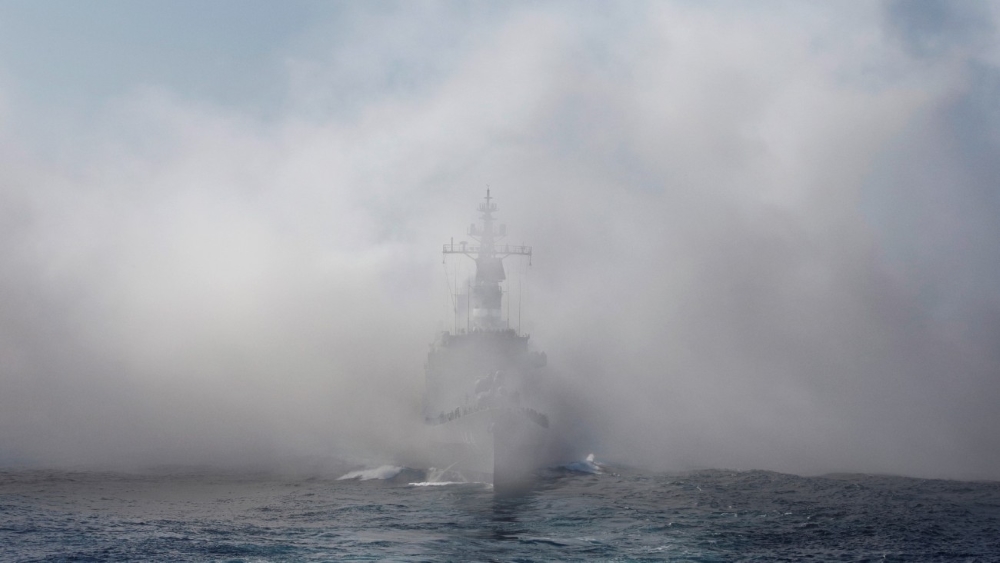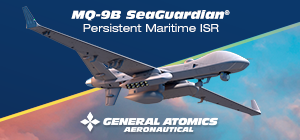
The recent contract between Rohde & Schwarz and PGZ Stocznia Wojenna Sp. z o.o. for Poland's Miecznik programme put the naval communications and RCESM (Radar and Communications Electronic Support Measures) system under the spotlight. According to Polish media, the delivery also includes external radio communication sets in the HF/VHF/UHF frequency range. The radio stations, receivers, and antenna field elements supplied by Rohde & Schwarz will form part of the Integrated Communication System (IcommS) produced by PGZ Stoczni Wojennej.
Introduced in late 2022, the RCESM system is designed to enhance situational awareness and improve the ability of naval forces to detect, identify, and respond to potential threats in the maritime environment. The solution is particularly valuable in clearing the "fog" of uncertainty that often surrounds naval operations. By providing advanced electronic support capabilities, it enables naval vessels to gather critical intelligence about their surroundings, including the detection and analysis of electromagnetic signals from various sources. In addition, it incorporates advanced technologies such as wideband receivers, high-speed digital signal processing, and sophisticated analysis algorithms. These features would enable the system to perform its critical functions in real-time, even in challenging maritime environments.
Thanks to a brief conversation with Dennis-Peter Merklinghaus, Senior PR Manager at R&S, FW-Mag had the opportunity to get some additional insight into the reasons behind the success of the RCESM in Poland.
FW-Mag: In your perception, what specific capabilities does the RCESM (Radar Communications Electronic Support Measures) system offer that made it the preferred choice for Poland's Miecznik-class multi-role frigates?
D-P. Merklinghaus: The contract involves naval communications and radar and communications electronic support measures (RCESM), the naval electronic support (ES) solution from Rohde & Schwarz. Adaptable and scalable to specific requirements, the Rohde & Schwarz naval ES solution detects, identifies and locates complex and broadband radar emissions and captures enemy communications. It combines all the results and provides an extended picture of the entire electromagnetic spectrum. The solution’s particularly high sensitivity and accuracy results in an increased range coverage and early warning capability. Furthermore, the solution protects navy vessels against time-critical threats.
FW-Mag: Can you elaborate on how will Rohde & Schwarz collaborate with PGZ (Polska Grupa Zbrojeniowa) to integrate the RCESM system into the new frigates, and what role will each company play in the implementation process?
D-P. Merklinghaus: The communication of such details of the contract is the sole responsibility of the relevant integrator, in this case, PGZ. Please understand that we are therefore unable to provide limited information on this.
FW-Mag: Given that Rohde & Schwarz is providing both naval communications and RCESM systems for the Miecznik frigates, how do these systems together enhance the overall electronic warfare capabilities of the Polish Navy?
D-P. Merklinghaus: We have been present in the Polish Navy for many years, and it can even be argued that Rohde & Schwarz communication systems are a kind of standard in the Polish naval forces. Our solutions are present on most ships, but the Miecznik program has a much broader scope. In addition to the communications solutions, Miecznik ships will also receive our radar and communications electronic support measures (RCESM) systems. The benefit Rohde & Schwarz brings to any program is our integrated supply chain, production, and service capabilities, and, above all, the exchange of technologies that we offered to the Polish side. As a result, Miecznik-class frigates, in addition to communication means, will also be equipped with RCESM systems. The use of these systems will significantly increase both the survivability of ships on the battlefield and the ability to protect them against threats. Both systems contain elements of early warning, situational awareness and self-protection. These are passive technology solutions, unlike classic radars, they do not emit any signals. They can detect targets and threats to ships from significant distances. This provides very wide protection options. An additional element is the cooperation agreement, which includes elements such as the Electronic Warfare Academy. It is based on simulators that will be delivered to the PGZ Shipyard, and then future Polish electronic warfare operators will be trained on them.
FW-Mag: Thank you for your insights!








.png)
